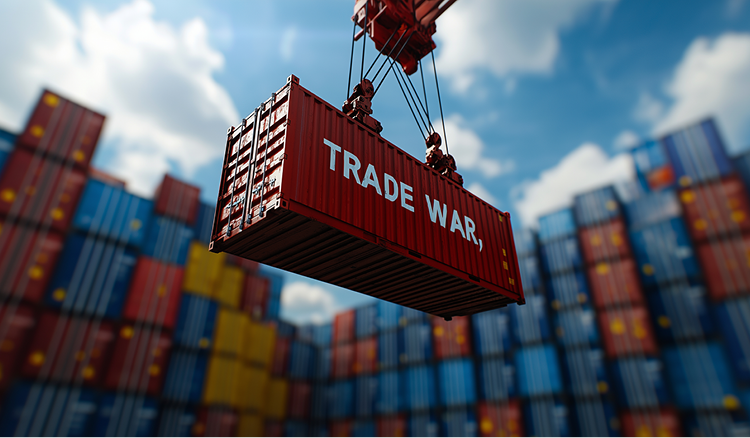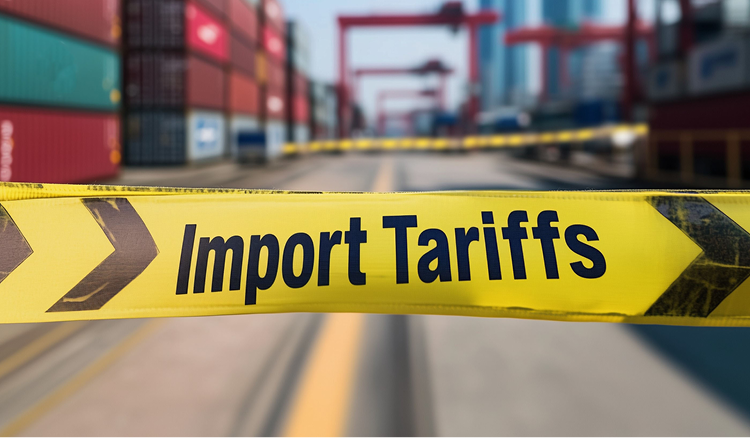Trump 2.0 Week 8 Recap: Latest Developments That Manufacturers & Distributors Should Be Aware Of
We’re now 8 weeks into his second term, and Trump has already made numerous changes to the economic and regulatory landscape of America.
Having walked a mile in your shoes, we understand how difficult it can be to keep up with these changes, especially when new developments occur nearly every hour.
In this article, we’ll discuss some of the latest developments from this week related to the ongoing trade war, as well as what’s on the horizon for the next few weeks.
Going forward, we’ll publish articles like these every Friday by 10AM CST, which you can access by visiting either our Thought Leadership Blog or Navigating Trump 2.0 pages.
Section 232 Tariff Implementation & Retaliation From Canada & The EU
One of the most notable developments from the past few weeks was Trump’s decision to pause the 25% tariffs on Canada & Mexico for goods covered under USMCA until April 2nd.
Despite this decision, Canada announced they would implement a series of retaliatory tariffs on $21 billion USD worth of American goods like orange juice, peanut butter, coffee, appliances, footwear, cosmetics, motorcycles and certain pulp and paper products.
Additionally, Ontario Premier Doug Ford implemented a 25% tax on electricity exports to the U.S. on Monday March 10th. In response, Trump announced that he would double the steel & aluminum tariffs on Canada, bringing them to 50%. Unsurprisingly, Canada decided to cancel the electricity tax shortly after this announcement, which prompted Trump to walk back his plans to double the steel & aluminum tariffs.
On Wednesday March 12th at 12:01AM, the Section 232 tariffs went into effect which:
- Terminates Section 232 duty tariff relief and flexibilities for covered steel and aluminum products from Argentina, Australia, Brazil, Canada, European Union countries, Japan, Mexico, South Korea, Ukraine and the UK
- Imposes 25% ad valorem duties on
- steel and steel derivative articles from all countries.
- aluminum and aluminum derivative articles from all countries except Russia (whose aluminum is prohibited from entering the U.S.)
- Terminates the Section 232 product exclusion process such that no new exclusions can be requested, but maintain existing exclusions until their expiration date.
- Eliminates the use of drawback duty claims for goods covered by the Proclamations.
- Instructs the Department of Commerce to establish, within 90 days of the Proclamations, a process for covering additional derivative steel articles.
- Instructs U.S. Customs and Border Protection (CBP) to prioritize reviews of the classification of imported steel articles and derivative steel articles, as well as imported aluminum articles and derivative aluminum articles, and to assess monetary penalties in the maximum amount permitted by law without consideration of any mitigating factors, if it finds that misclassification resulting in nonpayment of duties has occurred.
Shortly after these tariffs were implemented, the EU responded by announcing plans to implement retaliatory tariffs on US exports of beef, poultry, motorcycles, bourbon, peanut butter and jeans, similar to how they retaliated in 2018 to the original Section 232 tariffs. More specifically, the EU response will involve two steps. First on April 1, the commission will reimplement the taxes that were in effect from 2018-2020. Then on April 13 will come the additional duties targeting $19.6 billion (USD) in American exports. Despite this, The European Commission said, it is open to negotiations and would attempt to work with the Trump administration to find a mutually beneficial solution.
In response, Trump threatened to impose a 200% tax on all alcohol imports from the EU unless they decide to cancel the tax on US bourbon. But given that the US is the largest export market for wine, there’s a good chance they will cave just like Canada did with their 25% electricity tax. If not however, and this 200% tax does last, it will provide a significant boost to domestic producers, especially for those with a Veryable workforce strategy who can quickly scale up in a day or less.
Canada, on the other hand announced it will place 25% reciprocal tariffs on steel products, and also raise taxes on a host of items such as tools, computers & servers, display monitors, sports equipment, and cast-iron products.
For now however, other countries that are key US suppliers of metals, including the UK, Australia, Mexico and Brazil, are holding off on any immediate retaliation for now.
In Mexico’s case, President Claudia Sheinbaum stated on Wednesday March 12th that her government will wait for a possible resolution in the coming weeks before deciding how they will retaliate. But given the US’s massive trade deficit with Mexico, Trump is unlikely to grant them relief.
The UK responded similarly, stating that while the implementation of these tariffs is disappointing news, they’ll take a more pragmatic approach and are hopeful they can negotiate something in light of the US’s slight trade surplus with them as of 2024.
Additionally, while the Trump administration has stated that no new exclusions will be granted, it’s likely that countries like Australia and Brazil will at least attempt to seek them, given America’s trade surplus with each of these countries.
For more context:
- The top 3 suppliers of steel to the United States are Canada, Brazil, and Mexico, who accounted for about half of all imports between March 2024 and January 2025, according to the International Trade Administration. Other countries like South Korea, Vietnam, Japan, Germany, Taiwan, the Netherlands, and China, make up 30 percent of US steel imports.
- For aluminium, Canada is the largest supplier, making up 40% of US aluminum imports, followed by the UAE and Australia.
Here To Stay: House GOP Blocks Democrats From Forcing Vote on Tariffs
In order to impose tariffs on China, Canada, and Mexico, Trump utilized both the International Emergency Powers Act and National Emergency Act, which gives a president the authority to control international transactions after declaring a national emergency. This however was the first time these laws have ever been used to implement tariffs.
However, The National Emergencies Act outlines an expedited process for congressional action on repealing a national emergency if not acted on within a period of 15 days.
Democrats were already pursuing this, however on Tuesday March 11th, House Republicans approved a provision that prevents Democrats from forcing votes for the rest of the year on repealing Trump’s tariffs.
While Congress can still approve a joint resolution to end a national emergency declared by a president, with Republicans currently controlling both the house and the senate this is unlikely to happen.
The takeaway: these tariffs are here to stay.
*On a side note: this isn’t the first time this sort of maneuver has been utilized, and Democrats have previously used similar tactics to prevent Republicans from forcing a vote to repeal national emergency declarations.
What’s On The Horizon?
One of the biggest things to prepare for in the coming weeks is the reimplementation of the 25% tariffs on non-USMCA goods from Canada & China on April 2nd. While they may have been paused twice so far, don’t count on this happening again. Even if they are, any exemption will likely only apply to select imports. To read more about these tariffs and which industries will be the most affected, click here.
Also on April 2nd, Trump is expected to implement his reciprocal tariffs. In previous weeks, he’s stated that he already has a plan for nearly every country the US does business with, not to mention he’s posted on his Truth Social account about how he can’t wait until April 2nd comes around, so don’t count on these being pushed back. To learn more about these reciprocal tariffs, click here.
In the upcoming week however, it’s almost certain that new developments will occur with the EU and Canada in relation to their retaliatory measures against the Section 232 tariffs. Yesterday on Thursday March 13th, U.S. officials met with Canadian officials to begin negotiations. While the meeting ended without the tariffs being removed, Ontario Premier Doug Ford says the meeting went well and is feeling positive. Time will tell though, and he may just be saying this in an attempt to maintain the morale of Canadian business leaders.
Additionally, both Mexico and the UK have held off on retaliatory measures for now and feel relatively optimistic that negotiations over the next few weeks will play out in their favor. With Trump stating repeatedly that no new exclusions will be granted however, it’s unlikely he’ll budge on this matter, especially for a country like Mexico who the US has a massive trade deficit with. This of course would mean retaliation from these countries, and those that do business with these countries especially should pay attention to this.
Lastly, while there are currently no plans set up for President Trump to meet with China regarding the ongoing trade war, this of course could change in the blink of an eye.
Winning With Agility
Things are moving at breakneck speed and this ongoing trade war is unlike anything we’ve ever lived through before. Regardless of what anyone might tell you, nobody really knows what will happen next. That’s why being agile and able to quickly pivot up or down is more important than ever before. The companies that thrive amidst the uncertainty of 2025 and beyond won’t be the ones with the most resources, they’ll be the ones who can react the fastest. And that’s where Veryable comes into play. In addition to giving you the ability to quickly scale up in 1 day or less, a labor pool provides you with an essentially infinite supply of thoroughly vetted and skilled labor without the burden of permanent overhead. This allows you to put yourself out there and aggressively pursue new opportunities without the fear of getting caught with your pants down. To learn more about this approach, check out this article.
Conclusion
In addition to these weekly recap articles, we’ll be releasing our US Manufacturing Today Podcast on Tuesday March 18th, with new episodes being released on a weekly basis going forward. Hosted by our Head of Reindustrialization & Growth Innovation Matt Horine, and featuring interviews from current operations professionals, this podcast will cover what's changed so far, what's on the horizon, and how it will impact your business.
To ensure you don't miss out, make sure to subscribe now on: Apple Podcasts, Spotify, YouTube, or PocketCasts. You’ll also be able to each episode on our website at https://www.veryableops.com/us-mfg-today-podcast
For more information on changes taking place, make sure to visit our “Navigating Trump 2.0” page. Here you’ll find a full breakdown of Trump’s tariffs, as well as an assortment of blog articles that discuss how leveraging Veryable will position your business to thrive in the coming months.
Previous Posts
Trump 2.0 Week 9 Recap: What’s New, What’s Coming Up, and Why Agility Is More Important Than Ever
The Future of Manufacturing and Logistics
Create a free business profile today to explore our platform.






